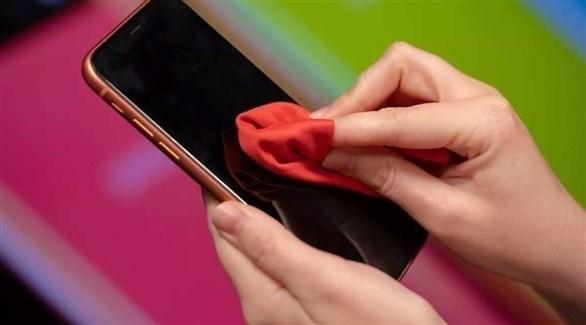In light of the outbreak of the Corona virus, one thinks a lot about the things he holds in his hands, including the smartphone, and whether it is a source of infection or not, especially since it is used on the face near the mouth and nose.
Professor Markus Eggert, a microbiologist at the German University of Furtwangen, explained, "The smartphone is not a source of germs compared to the number of germs that may be scattered on the hands, and therefore the bacterial load on smartphones is very little."
The German professor added, "Modern smartphones are very dry and very soft, and therefore only a very small amount of germs stick to them." Germs will not find what to eat on the surfaces of new smartphones, so it is difficult to reproduce, unlike old button cell phones, which have an increased bacterial load.
For his part, Sebastian Kloss, from the German Association for Communications and Information Technology (Bitcom), pointed out that the user has an impact on the number of germs spread on his phone, and said that "the outer surface of the smartphone is a reflection of the personality of its owner."
The German expert added that germs abound on the smartphones of users who are not keen to wash their hands a lot, and who use their devices while eating or when using the bathroom, in a way that exceeds the devices of users who do not do such actions.

In addition, the state of the smartphone affects the bacterial load, and Kloss explained, "Bacteria, viruses and mold spots can adhere well to scratches on mobile devices."
Smartphone-producing companies such as Apple and Samsung often provide some tips and instructions for cleaning smartphones on their websites, and experts always advise turning off the device and taking off all electrical connections before cleaning the smartphone.
The best way to clean the smartphone is to use a soft, lint-free and slightly damp cloth, and in case of severe soiling, the user can use a little soap and water when cleaning the smartphone.
One of the important things to consider when cleaning a smartphone is that moisture does not reach the slots of the smartphone, and although many smartphones are water-resistant, Kloss advises that they should be wiped immediately with a dry cloth after cleaning.
Professor Eggert pointed out that it is not necessary to sterilize and disinfect the smartphone at home because there is no particular risk of infection, in addition, the Corona virus can be eliminated by soap and water.
In turn, Bernd Glasl, from the German Association of Washing and Body Care Products, explained that disinfection is almost possible given that with the necessary amount and the required effect time, detergents may seep through the openings into portable devices.
Other cleaners may damage the smartphone, such as glass cleaners, where the touch screens contain an oil-repellent layer, to prevent the appearance of fingerprints, and the German expert Kloss warned that cleaning the screen with alcohol-based cleaners leads to gradually removing the grease-repellent layer.
Smartphone connection ports are very sensitive parts, so the user must be careful and careful when cleaning them without using any wet means. Cotton buds or a soft toothbrush can be used here.
Owners of single-lens reflex cameras can use an air blower to clean the smartphone, and Kloss warned against using high-pressure air cleaners.
Glasl added that the number of times the smartphone is cleaned depends on how it is used, if the user travels a lot and meets a lot of people or uses his smartphone in the kitchen, then the smartphone must be cleaned a lot, and German Professor Eggert stressed that the smartphone does not pose any risk of infection for For healthy people at home.